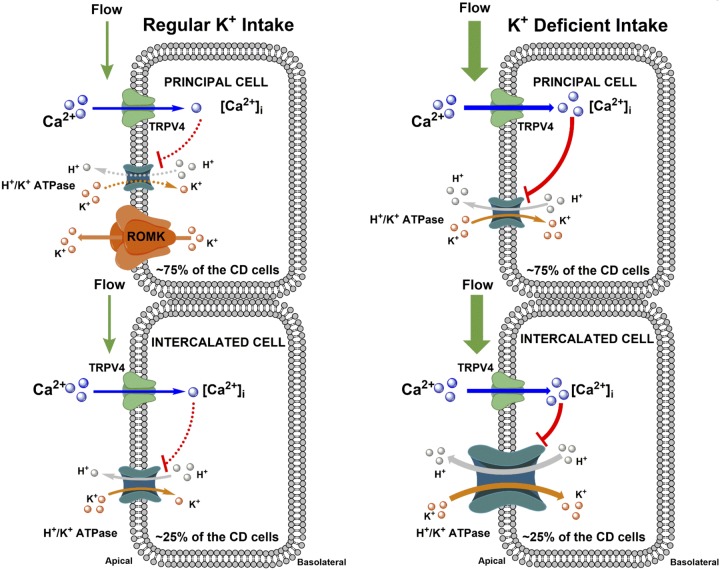Fig. 7.
Proposed role of transient receptor potential vanilloid type 4 (TRPV4) in the regulation of H+-K+-ATPase-dependent K+ reabsorption in the collecting duct (CD) during regular and K+-deficient states. Larger icon sizes reflect higher expression levels of transport proteins. During the regular K+ diet (left), TRPV4 has no appreciable role in the regulation of CD K+ reabsorption. Tubular flow is not elevated, and the activity of TRPV4 channels is at a baseline. H+-K+-ATPase expression is also low. The CD secretes K+ due to the activity of the Ca2+-independent renal outer medullary K+(ROMK) channel in principal cells. In the K+-deficient state (right), there is virtually no ROMK expression, whereas H+-K+-ATPase levels are upregulated. Activation of TRPV4 by high tubular flow inhibits H+-K+-ATPase activity in both principal and intercalated cells to decrease/shape K+ reabsorption in the CD. While intercalated cells account for only ~25% of total CD cells, the activity of H+-K+-ATPase is nearly 10-fold higher in intercalated cells compared with principal cells (see Fig. 6B). Overall, the total contribution of H+-K+-ATPase activity would be still roughly three times higher in intercalated cells, even after correction for cell numbers. [Ca2+]i, intracellular Ca2+ concentration.

